|
|
 
 The origins and development of the Ottoman-Safavid conflict The origins and development of the Ottoman-Safavid conflict 
 Author: Adel Allouche The origins and development of the Ottoman-Safavid conflict (906-9621500-1555) K. Schwarz Verlag 1983 Format: PDF Size: 68,4 МБ Language: English Pages: 202 The Ottoman-Safavid conflict is considered "within the framework of the entire geopolitical pattern of the Middle East and Transoxania at the end of the fifteenth century and the beginning of the sixteenth rather than within the simplistic framework of Shi'ism versus Sunnism." Examines relations between three of the major Muslim powers of the time--Ottomans, Safavids, Mamluks--while touching upon issues related to the Uzbeks, Mughals, and Christendom where relevant. Begins with Ottoman relations with eastern Anatolian and Iranian tribes following the capture of Constantinople (1453) and the development of the Safaviya Sufi Order culminating with the coronation of Ismail I in 1501. The bulk of the work then focuses on Ottoman-Safavid relations from Ismail's accession to the Treaty of Amasya (1555), paying particular attention to events leading up to Selim I's defeat of the Safavids at Chaldiran (1514) and the repeated clashes between Shah Tahmasb and Sultan Sulayman that led to Amasya and the surrender of Arab Iraq to the Ottomans. Also given attention is Selim's conquest of the Mamluk Empire in 1517, an effort to prevent a Mamluk-Safavid alliance, and Ottoman concerns over repeated Shi'ite rebellions in Anatolia.
 
 The Serbs and Byzantium during the reign of Tsar Stephen Dusan (1331-1355) and his successors The Serbs and Byzantium during the reign of Tsar Stephen Dusan (1331-1355) and his successors 
 Author: George Christos Soulis The Serbs and Byzantium during the reign of Tsar Stephen Dusan (1331-1355) and his successors Dumbarton Oaks Library and Collection ISBN: 0884021378 1984 Format: PDF Size: 47,1 МБ Language: English Pages: 353 George Christos Soulis unravels the sequence of events in [a] chaotic, relatively little understood, and crucial period, which is presented with clarity in this tour de force of research and organization. . . . This is a major contribution to the understanding of events that prevented either a consolidation of Byzantium and its survival or Serbian succession and the continuity of a variant of the Byzantine civilization.
 
 Die Ritterorden in Umbruchs- und Krisenzeiten. The Military Orders in Times of Change and Crisis Die Ritterorden in Umbruchs- und Krisenzeiten. The Military Orders in Times of Change and Crisis 
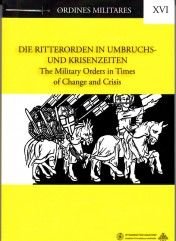 Author: Die Ritterorden in Umbruchs- und Krisenzeiten. The Military Orders in Times of Change and Crisis Uniwersytet Mikołaja Kopernika 2011 Format: PDF Size: 2.06 mb Language: English
 
 Decline and Fall of Byzantium to the Ottoman Turks An Annotated Translation of Historia Turco-Byzantina 1341-1462 Decline and Fall of Byzantium to the Ottoman Turks An Annotated Translation of Historia Turco-Byzantina 1341-1462 
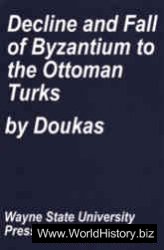 Author: Doukas Decline and Fall of Byzantium to the Ottoman Turks An Annotated Translation of Historia Turco-Byzantina 1341-1462 Wayne State University Press ISBN: 0814315402 1975 Format: PDF Size: 8,6 МБ Language: English Pages: 346 Decline and Fall of Byzantium to the Ottoman Turks: An Annotated Translation of "Historia Turco-Byzantina"
 
 The Afterlife of the Roman City: Architecture and Ceremony in Late Antiquity and the Early Middle Ages The Afterlife of the Roman City: Architecture and Ceremony in Late Antiquity and the Early Middle Ages 
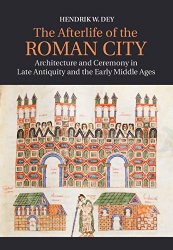 Author: Hendrik W. Dey The Afterlife of the Roman City: Architecture and Ceremony in Late Antiquity and the Early Middle Ages Cambridge University Press 2014 Format: PDF Size: 10.3 Mb Language: English This book offers a new and surprising perspective on the evolution of cities across the Roman Empire in late antiquity and the early Middle Ages (third to ninth centuries AD). It suggests that the tenacious persistence of leading cities across most of the Roman world is due, far more than previously thought, to the persistent inclination of kings, emperors, caliphs, bishops, and their leading subordinates to manifest the glory of their offices on an urban stage, before crowds of city dwellers. Long after the dissolution of the Roman Empire in the fifth century, these communal leaders continued to maintain and embellish monumental architectural corridors established in late antiquity, the narrow but grandiose urban itineraries, essentially processional ways, in which their parades and solemn public appearances consistently unfolded. Hendrik W. Dey's approach selectively integrates urban topography with the actors who unceasingly strove to animate it for many centuries
 
 A Companion to Britain in the Later Middle Ages A Companion to Britain in the Later Middle Ages 
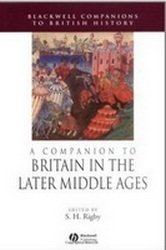 Author: Stephen Henry Rigby A Companion to Britain in the Later Middle Ages Wilеy-Blаckwell 2003 Pages: 688 ISBN: 0631217851 Format: PDF Size: 19.30 mb Language: English Quality: Good This authoritative survey of Britain in the later Middle Ages comprises 28 chapters written by leading figures in the field. Covers social, economic, political, religious, and cultural history in England, Ireland, Scotland, and Wales Provides a guide to the historical debates over the later Middle Ages Addresses questions at the leading edge of historical scholarship Each chapter includes suggestions for further reading
 
 The Price of Freedom A History of East Central Europe from the Middle Ages to the Present The Price of Freedom A History of East Central Europe from the Middle Ages to the Present 
 Author: Piotr S. Wandycz The Price of Freedom A History of East Central Europe from the Middle Ages to the Present Routledge 2001 ISBN: 0415254906 Format: PDF Size: 3,2 МБ Language: English Pages: 352 The second edition of this distinguished book brings the history of the region up to date. It discusses the events of the post-communist decade of the 1990s and the problems resulting from the transition to democracy and market economy. Taking a thematic approach, the author explores such issues and controversies as the tension between the industrial developed West and the agrarian East, the rise of modern nationalism, authoritarianism and Communism.
 
 The Third Horseman: Climate Change and the Great Famine of the 14th Century The Third Horseman: Climate Change and the Great Famine of the 14th Century 
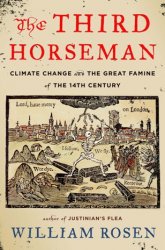 Author: William Rosen The Third Horseman: Climate Change and the Great Famine of the 14th Century Viking Penguin 2014 Format: epub/pdf Size: 10.4 Mb Language: English In May 1315, it started to rain. It didn’t stop anywhere in north Europe until August. Next came the four coldest winters in a millennium. Two separate animal epidemics killed nearly 80 percent of northern Europe’s livestock. Wars between Scotland and England, France and Flanders, and two rival claimants to the Holy Roman Empire destroyed all remaining farmland. After seven years, the combination of lost harvests, warfare, and pestilence would claim six million lives—one eighth of Europe’s total population. William Rosen draws on a wide array of disciplines, from military history to feudal law to agricultural economics and climatology, to trace the succession of traumas that caused the Great Famine. With dramatic appearances by Scotland’s William Wallace, and the luckless Edward II and his treacherous Queen Isabella, history’s best documented episode of catastrophic climate change comes alive, with powerful implications for future calamities.
 
 Anglo-Saxons at war 800-1066 Anglo-Saxons at war 800-1066 
 Author: Paul Hill Anglo-Saxons at war 800-1066 Pen and Sword Military ISBN: 1848843690 2012 Format: EPUB Pages: 224 Size: 4 Mb Language: English In the time of the great Anglo-Saxon kings like Alfred and Athelstan, Æthelred and Edmund Ironside, what was warfare really like – how were the armies organized, how and why did they fight, how were the warriors armed and trained, and what was the Anglo-Saxon experience of war? As Paul Hill demonstrates in this compelling new study, documentary records and the growing body of archaeological evidence allows these questions to be answered with more authority than ever before. His broad, detailed and graphic account of the conduct of war in the Anglo-Saxon world in the unstable, violent centuries before the Norman Conquest will be illuminating reading for anyone who wants to learn about this key stage of medieval history.
 
 History of Civilizations of Central Asia: The Dawn of Civilization : Earliest Times to 700 B.C History of Civilizations of Central Asia: The Dawn of Civilization : Earliest Times to 700 B.C 
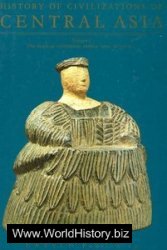 History of Civilizations of Central Asia: The Dawn of Civilization : Earliest Times to 700 B.C Author: A. H. Dani United Nations Educational 1993 Pages: 535 ISBN: 9231027190 Format: PDF Size: 16 MB Language English Volume 1 of this UNESCO multi-volume series traces the history of man in this vast region from the Palaeolithic beginnings to circa 700 BC, when the foundations of the Achaemenian Empire were laid. The earliest history of man is evidenced and the food producing areas of Turkmenistan, Tajikistan and the Indus Valley explored. The Bronze Age and the first signs of urbanization from the Indus to the Oxus are described as is the development of the nomadic pastoral tribes, such as the Aryans, whose history can be seen in proper perspective through archaeological evidence now available. A comprehensive first instalment for any enthusiast interested in the history and development of Asia.
 
 Castles in Ireland: Feudal Power in a Gaelic World Castles in Ireland: Feudal Power in a Gaelic World 
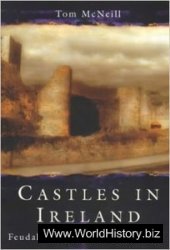 Author: T.E. McNeill Castles in Ireland: Feudal Power in a Gaelic World Routledge ISBN: 0415165377 2005 Format: PDF Size: 25,2 МБ Language: English Pages: 280 The castles of Ireland are an essential part of the story of medieval Europe, but were, until recently, a subject neglected by scholars. A lord's power and prestige was displayed in the majesty and uniqueness of his castle. The remains of several thousand castles enable us to reconstruct life in Ireland during these crucial centuries. Castles in Ireland tells the story of the nature and development of lordship and power in medieval Ireland. Ireland formed the setting to the interplay of the differing roles of competing lordships: English and Irish; feudal European and Gaelic; royal and baronial. Tom McNeill argues that the design of the castles contests the traditional view of Ireland as a land torn by war and divided culturally between the English and Irish.
 
 Crusader Castles Crusader Castles 
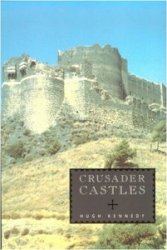 Crusader Castles Cambridge University Press Author: Hugh Kennedy 1994 Pages: 237 Format: PDF Size: 11 mb Language: English This is a general account of the history and architecture of Crusader castles in the Kingdom of Jerusalem, County of Tripoli and Principality of Antioch between 1099 and 1291, the years during which the Crusaders had a permanent presence on the Levantine coast. Extensive use is made of contemporary chronicles to show the reasons why castles were built and how they were used in peace and war. The book is fully illustrated by photographs, drawings and plans, and contains a comprehensive bibliography.
 
 The Oxford Handbook of Tudor Literature, 1485-1603 The Oxford Handbook of Tudor Literature, 1485-1603 
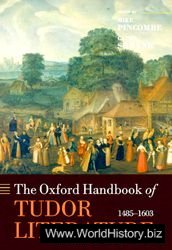 The Oxford Handbook of Tudor Literature, 1485-1603 Author: Mike Pincombe (Editor), Cathy Shrank (Editor) Oxford University Press 2009 ISBN: 978–0199205882 Format: pdf Pages: 861 Size: 10 Mb Language: English, English This is the first major collection of essays to look at the literature of the entire Tudor period, from the reign of Henry VII to death of Elizabeth I. Written by experts from Europe, North America, and the United Kingdom, the forty-four chapters in The Oxford Handbook to Tudor Literature recover some of the distinctive voices of sixteenth-century writing, its energy, variety, and inventiveness.
 
 The Knights Templars The Knights Templars 
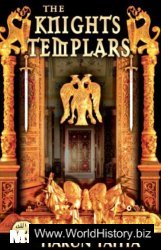 Author: Harun Yahya The Knights Templars Millad Book Centre 2003 Format: PDF Size: 10,42 mb Language English The Templars were a shadowy medieval cult proscribed by a joint decision of the King of France and the Pope. It was originally founded to fight for Christianity, but over time_as the Templars acquired immense power, adopted heretical teachings, and established a capitalist system based on material gain, their order fell afoul of the Church. After being dispersed, the cult survived underground. The Templars developed a fierce opposition to the Church and the divine religions in general, and eventually turned into the organization we know as the Freemasons. The Masons’ antireligious philosophy and involvement in revolutions and political movements is a consequence of their Templars ancestry. This book examines the secret history of this Templar/Masonic organization and some of its influences on recent world and Turkish history.
 
 The Medieval Archer The Medieval Archer 
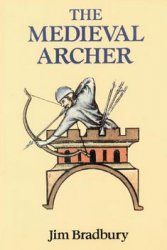 The Medieval Archer Author: Jim Bradbury Boydell Press; New edition 2014 ISBN: 0851151949 Pages: 208 Language: English Format: PDF Size: 39 MB It is a delight to read a book which recognises the importance of warfare in medieval times...also...discusses the changing role of the archer in medieval society. SIR STEVEN RUNCIMANThis book traces the history of the archer in the medieval period, from the Norman Conquest to the Wars of the Roses. From a close study of early evidence, Mr Bradbury shows that the archer's role before the time of Edward I was an important but rarely documented one, and that his new prominence in the fourteenth century was the result of changes in development of military tactics rather than the introduction of the famous `longbow'. A second thread of the book examines the archer's role in society, with particular reference to that most famous of all archers, Robin Hood. The final chapters look at the archer in the early fifteenth century and then chronicle the rise of the handgun as the major infantry weapon at the bow's expense. JIM BRADBURY writes and lectures on battles and warfare in England and France in the middle ages.
 
 The mosaics of nea moni on Chios, vol 1 The mosaics of nea moni on Chios, vol 1 
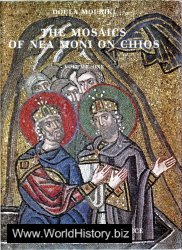 Author: Doula Mouriki The mosaics of nea moni on Chios, vol 1 Commercial Bank of Greece 1985 Format: PDF Size: 45.09 mb Language: English One of the three great 11th century monuments of Byzantine art, these mosaics are a valuable example of style and character found during this prosperous era of the Byzantine Empire.
 
 The Concise History of the Crusades The Concise History of the Crusades 
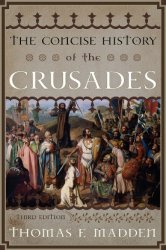 Author: Thomas F. Madden The Concise History of the Crusades (Critical Issues in World and International History) Rowman & Littlefield Publishers 2014 Format: epub/pdf Size: 22.4 Mb Language: English What is the relationship between the medieval crusades and the problems of the modern Middle East? Were the crusades the Christian equivalent of Muslim jihad? In this sweeping yet crisp history, Thomas F. Madden offers a brilliant and compelling narrative of the crusades and their contemporary relevance. Placing all of the major crusades within their social, economic, religious, and intellectual environments, Madden explores the uniquely medieval world that led untold thousands to leave their homes, families, and friends to march in Christ’s name to distant lands. From Palestine and Europe's farthest reaches, each crusade is recounted in a clear, concise narrative. The author gives special attention as well to the crusades’ effects on the Islamic world and the Christian Byzantine East.
 
 The Central Middle Ages Europe 950–1320 The Central Middle Ages Europe 950–1320 
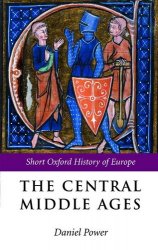 Author: composite authors The Central Middle Ages Europe 950–1320 Oxford University Press 2006 Format: PDF Language: English Pages: 304 Size: 2,83 МБ
 
 Forces of the Hanseatic League: 13th-15th Centuries Forces of the Hanseatic League: 13th-15th Centuries 
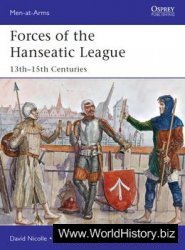 Author: David Nicolle Forces of the Hanseatic League: 13th-15th Centuries Osprey Publishing Osprey Men-at-Arms 494 ISBN: 1782007792 2014 Format: PDF (e-book) Pages: 50 Size: 3 Mb Language: English The Hanseatic League was a commercial and defensive federation of merchant guilds based in harbour towns along the North Sea and Baltic coasts of what are now Germany and her neighbours, which eventually dominated maritime trade in Northern Europe and spread its influence much further afield. The League was formed to protect the economic and political interests of member cities throughout a vast and complex trading network. The League continued to operate well into the 17th century, but its golden age was between c.1200 and c.1500; thereafter it failed to take full advantage of the wave of maritime exploration to the west, south and east of Europe.
|
|

























 World History
World History









